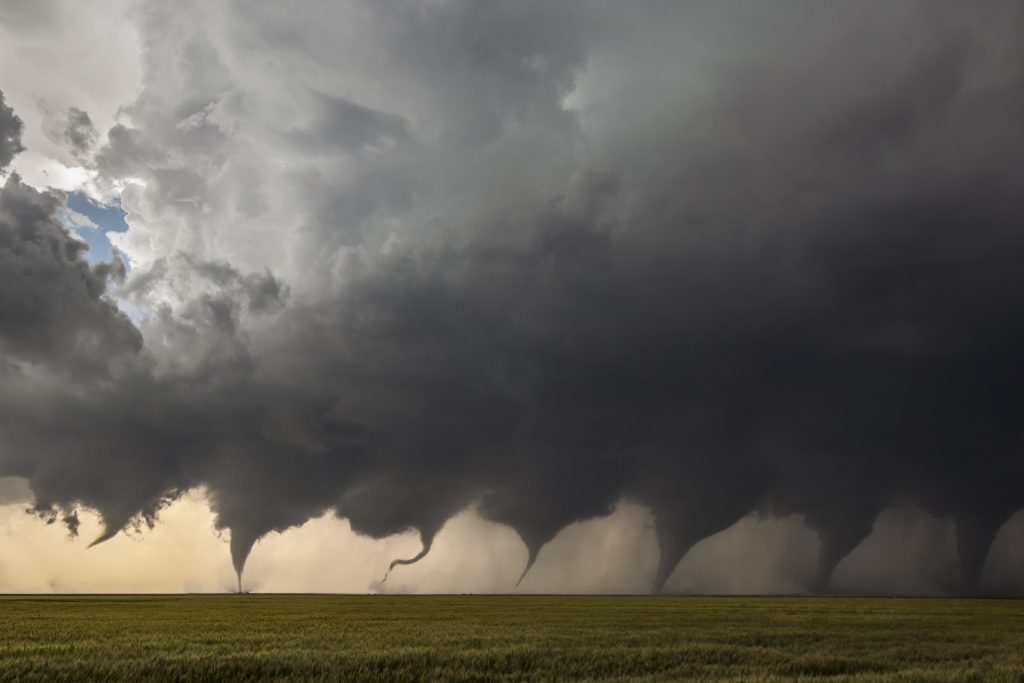
As winter has given way to spring, the warmer weather has heralded the emergence of tornado season across the United States. The conditions for frequent and more severe tornadoes have historically reached their peak from March through June.
Though tracking and predicting tornadic activity is difficult – given their volatility and short duration, experts and meteorologists expect 2019 to see more severe weather and tornadoes than were seen in 2018, due to the fact that 2018 was a historically mild year.
According to two metrics by which experts measure tornadoes, 2018 broke records dating back to 1875 and 1950. In 2018, only 10 people lost their lives – a record low since tracking began, and there were no violent tornadoes as meteorologists measure them. Violent tornadoes mean tornadoes at either EF-4 or EF-5 intensity, or over 166
Unfortunately, 2019 is not expected to follow this unprecedented low. A devastating EF-4 tornado already struck parts of Alabama and Georgia March 3 – claiming 23 lives in the process.
Additionally, experts are predicting that 2019 may even be worse than average with the popular weather service, AccuWeather, going so far as to assert that the U.S. will see over a thousand tornadoes in 2019 – although their methodology in that prediction has fallen under considerable scrutiny. They further predict that the Tornado Alley states of Nebraska, Kansas, Oklahoma and Texas will be likeliest to see the most severe tornadic weather this season.
Liberty stands in the heart of the traditional “Tornado Alley,” a term coined in the 1950s to describe states that usually had the highest tornadic activity – generally meaning Texas, Oklahoma, Kansas, South Dakota, North Dakota, Illinois, Iowa, Missouri, Nebraska, Colorado and Minnesota.
However, over time, scientists have noticed a shift in this weather model. As weather patterns shift due to climate change, tornadoes have begun to happen with higher frequency and severity southeast of the traditional Tornado Alley.
The consequences of this shift are far-reaching as more powerful storms strike into a region not as experienced in grappling with tornadic activity – often resulting in deadlier storms as residents are more likely to be unprepared for dealing with tornadoes. For instance, sirens that sound in the event of tornado warnings or high-potential storms are a staple across most of the Midwest but are generally less common in other regions.
Regardless of the changing borders of Tornado Alley, Liberty remains in the heart of it, and William Jewell College is no stranger itself to tornadoes.
In 2003, a powerful EF-4 tornado struck campus – causing considerable damage to most of the buildings and demolishing the married housing hall. Luckily, in that storm, no one on campus was hurt.
As tornado season begins, people and institutions across the Midwest have begun to prepare. Jewell conducted a tornado drill April 3. The College sent out text and email alerts to students to help familiarize them with the locations of tornado shelters on campus – which are usually located on the lowest level of every hall.
As tornado season progresses, there is no better advice than that offered by the National Weather Service – to be aware of weather conditions in one’s area and have a plan for what to do if tornadic activity occurs. While traveling, especially in the Midwest, it is important to monitor both the weather in one’s area, the area at the destination and the weather all along the travel corridor to maintain a high level of awareness.
